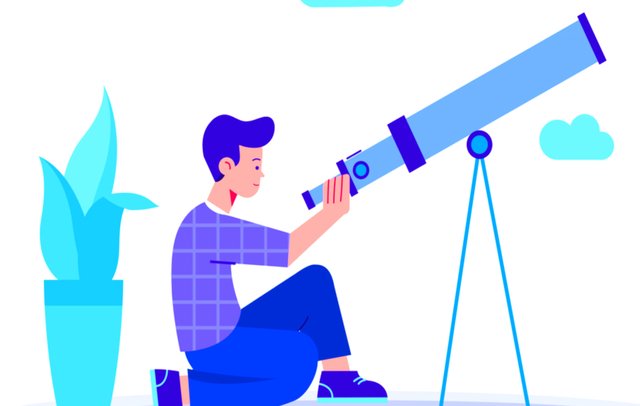
Universe is simply infinite. And even the nearest planetary and star systems are at tremendous distance.
We just can't get there for now. But then, at least we want to watch it. See it.
But I have seen people complaining "with a small telescope they can't see much!". And you too might agree on that.
And you know what? They are right! They will never be able to see more than what they try for.
This so-called beginner astronomers get discouraged, because they don't get the results they expected.
Observing sky is not like spying your neighbors with binoculars. Its not that quick!
A good sky observer is also good in patience and is able to stare through the eyepiece for hours.
To be very very clear, improving telescope performance is not just about tuning scope. Off course its part of it. But you also need to tune yourself and your eyes.
So in this article, today, you will learn some telescope hacks. I have found this to be most effective. This are the 8 simple DIY telescope improvement tips that works.
So here are the few things which can help not just optimize yourself but your telescope as well. So you can see more and better:
Look for Clear sky
There's no substitute to the clear sky. In fact it can indirectly add an extra inch to your aperture.
Look up in the sky at day time for clues. Are there clouds? When the sun is over the head, block it with your hand and see if its clear blue around it. At the sunrise or sunset, make sure there are no clouds at horizon.Avoid Light Pollution
Pollution in no form is good for us. And when it comes to stargazing, the most hazardous one is light pollution.
We usually observe the sky at night time. The simple reason for this, is because we need our surroundings as dark as possible. So that you can explicitly get to see the light coming from that cute little distant object. But in our modern society, there's light pollution everywhere. So its never gonna be a ideal spot. So what you have to do is go to a dark place.
And it should be with least artificial light (eg. Street light etc). Going away from city is best when you want to see faint/far distant object.
- New Moon is Good
Aim for longer hours of observations especially on new moon. Try to have at least two session per week.
- Let Your Eyes Adopt to Darkness
Understand your eyes. They are on habit to brightness. So it will take some practice for your eyes to adopt to darkness. And your pupil to setup.
When you start observing in dark surrounding. Make sure you don't see source directly (like phone, or light bulbs etc.). It will disturb the adaptation. Use red flash light if needed and still don't directly look inside it. It may take upto half an hour for your eyes to be at its 100% ability.
- Keep Staring at it!
You know what? There's a secret! To actually notice the details. Just keep staring at the object constantly through the eyepiece. And as you keep on, the details starts to unlock. It may take a hour to enjoy the full view. Off-course, the time varies with distance from object. And you can take small breaks in between as you stare. But just don't disturb the concentration of your pupil with shiny things.
- Thermally Optimize the Scope
Its likely that when you put your telescope outside to start observations, it will be warmer than outside air.
What then happen is, the scope radiates heat which can cause problem to viewing. So no matter how small your scope is, it's better to allow it to collimate to outside temperature.
For scopes upto 4 inches, it usually takes 20 minutes. And for scopes larger than 4 inches, add 10 minutes extra per extra inches.
Usually reflector scope takes less time for the process than Refractor.
- Stabilize Your Telescope Mount
Hold it strong! As you zoom-in the objects, the tiny vibrations your scope makes, are also zoomed-in. Its a big problem when you zoom high. You just won't be able to see things at its best. They just won't look clear! Its usually a big problem with cheap, lightweight telescopes.
So what you have to do is to stabilize it. Suspend some heavy wight (like Backpack, or waterbottles etc.) to the tripod. Hope you got the clue!
So get out there with your adorable scope. Follows all those tips I mentioned below. Get the experience you never got before. And let me know, how much you can see now and if there are any improvement? Just comment below for any anything you needed!